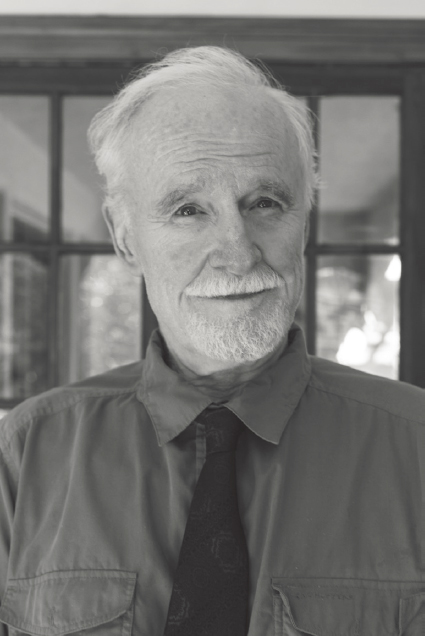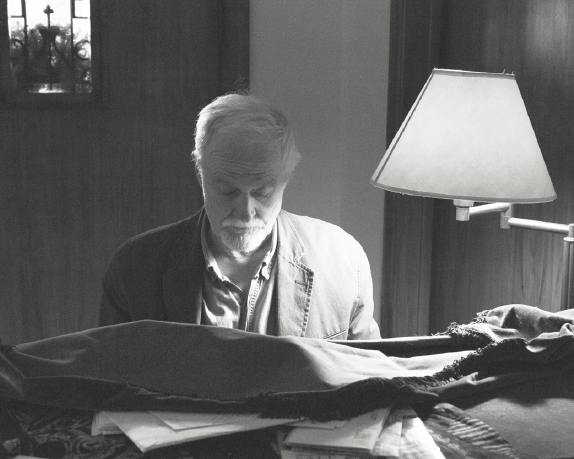

ROBERT W. HELLWARTH
1930–2021
Elected in 1977
“Contributions to the understanding of quantum electronics and the invention of new laser devices.”
BY PAUL DANIEL DAPKUS
ROBERT WILLIS HELLWARTH, distinguished engineer and physicist and a pioneer in quantum electronics, nonlinear optics, and photonics, died in Santa Monica, California, on January 20, 2021, at the age of 90. He was a University Professor Emeritus at the University of Southern California, where he had also been the George Pfleger Professor of Electrical Engineering and professor of physics and astronomy until his retirement in 2018.
Born December 10, 1930, in Ann Arbor, Michigan, Bob was the son of Arlen Roosevelt Hellwarth, an electrical engineer who worked for the Detroit Edison Company,1 and Sarah Townsend Hellwarth, a college-educated homemaking mother. The oldest of four boys, he attended neighborhood public schools including Cooley High School. He developed a strong interest in science and engineering by tinkering with the electrical gadgets and tools in the family basement.
An adept student, Bob was offered a scholarship to Princeton without actually applying, based on his college board exams. After initially declining the offer, he reconsidered
___________________
1 It is worth noting that in 1958 Arlen Hellwarth retuned to his alma mater, the University of Michigan, where he became professor of electrical engineering and then associate dean and secretary of the College of Engineering. All four of his sons studied engineering.
and graduated in 1952 as valedictorian of his class with a dual BS degree in electrical engineering and physics. He attended St. John’s College in Oxford University as a Rhodes scholar, joined the Clarendon Laboratory, and earned a doctorate in physics in 1955; his dissertation title was “An Investigation of Hyperfine Structure Using the Atomic Beam Magnetic Resonance Method.” His fondness for Oxford brought him back many times over the years.
In his third year at Princeton, he got a summer job at a Danish shipyard. At the end of the summer, during the 11-day transit back to the United States aboard a Dutch ship, he met Abigail Gurfein, who was returning to New York City after touring Europe with a student group. They spent time together aboard the ship and, after Bob completed his doctorate, married in 1957. The couple had three children, Ben, Margaret, and Tom, during their 20-year marriage.
The aerospace industry was booming in those times and Bob accepted a position with Hughes Aircraft Company in Culver City, later transferring to the newly completed Hughes Research Labs in Malibu. During his career at Hughes, he rose through positions of increased responsibility, ultimately managing the Theoretical Studies Department in 1968. In 1971 he moved to the University of Southern California as a professor of electrical engineering and of physics.
While at Hughes, Bob also held appointments of various types at Caltech, where he formed a lasting friendship and collaboration with Richard Feynman that strongly influenced his career and life. Feynman was Hellwarth’s best man at his marriage to Theresia de Vroom in 1985. Both men were “spirits” who relished a free flow of ideas and shared the outlook that exploring the laws governing the physical world was fun.
Shortly after the demonstration of an operating maser, Hellwarth collaborated with Feynman and Frank Vernon on work that was to become his most highly cited paper,2 an
___________________
2 Feynman RP, Vernon FL Jr, Hellwarth RW. 1957. Geometrical representation of the Schrödinger equation for solving maser problems. Journal of Applied Physics 28(1):49–52.
intuitive analysis of a two-level atomic system that is pedagogically simple and easily extendable to describe many of the properties of masers and lasers. Feynman and Hellwarth also collaborated on a paper analyzing electron transport in polar crystals in which the concept of a polaron was introduced.3
Bob Hellwarth’s scientific contributions are many and varied. He approached science with joy and curiosity—he would typically describe his latest interest as “great fun.” His curiosity about the physical world propelled him into new fields, and his intellect allowed him to consider scientific problems in unique ways.
He was at Hughes when the first laser was created there by Theodore Maiman, leading to one of his most substantive contributions. Bob knew Maiman well and was one of the first people to witness an operating visible laser. Early ruby lasers exhibited spontaneous fluctuations in their output intensity. Most people took the view that these fluctuations were a “problem” that required a solution. Bob, on the other hand, viewed them as a “feature” that offered potential for unique properties. He and colleagues studied their properties, and Bob devised an approach to increase and control the amplitude of the fluctuations. Q-switching, as he called it, was a technique for storing the energy in the laser in the atomic system until it was controllably released in short, intense pulses of light—increasing the peak power emitted by the laser a millionfold. These short intense pulses of light now form the basis for many current and emerging industrial and scientific applications of lasers, including cutting, sculpting, and material welding; medical processes; study of nonlinear optical phenomena; and, if Bob’s dreams were to be realized, enabling laser fusion for clean energy creation. Many different Q-switched laser systems are now available and have spread the impact of Bob’s invention to applications unimaginable at that time.
High-power lasers also enabled Bob’s study of nonlinear optical phenomena, the “sandbox” in which he chose to play
___________________
3 Feynman RP, Hellwarth RW, Iddings CK, Platzman PM. 1962. Mobility of slow electrons in a polar crystal. Physical Review 127(4):1004–17.
for much of his career at USC. In his research he focused on understanding and developing materials for nonlinear optical processes and devices. The rich physics of these processes provided ample feedstock for his inquisitive mind and led to the exploration of new phenomena, often with important applications.
For example, his exploration of four-wave optical mixing led to his development of optical phase conjugation that generates a time-reversed image of an optical beam—the underlying principle used in astronomy to correct astronomical images distorted by fluctuations in the atmosphere. This technique has found broad application in areas such as optical tracking and pointing, spatial and temporal image processing, optical filtering, and optical computing. He also invented the Raman-induced Kerr effect and Raman-induced phase-conjugation processes for which he was subsequently feted. His last scientific paper was published shortly before his 88th birthday.4
Bob Hellwarth’s research creativity and accomplishments garnered him wide recognition in the scientific community. He was a member of both the National Academy of Engineering and National Academy of Sciences, and a fellow of the American Physical Society, Institute of Electrical and Electronics Engineers (IEEE), American Association for the Advancement of Science, Optical Society of America (OSA), and American Academy of Arts and Sciences. He received the OSA’s Charles Hard Townes Award in 1983 “For his invention of the Q-switched laser, codiscovery of the Raman laser and explanation of stimulated scattering phenomena, and the theory of optical phase conjugation.” He was also the recipient of the IEEE Quantum Electronics Award in 1985 “For fundamental contributions to lasers, Raman scattering, and nonlinear optical processes.” In 1976 USC recognized him with its highest honor, the Associates Award for Creativity in Research (electrical engineering-electrophysics).
___________________
4 Huang L, Hellwarth RW. 2018. Azimuthally polarized hollow beams in free space: Exact vector solutions to Maxwell’s equations. Physical Review A 98(2):023843–46.
Bob loved the challenge of spirited technical discussion and did much to elevate the level of campus discourse by stimulating it as much as he could. He was known to issue cash challenges to anyone who could address some knotty scientific question that was occupying his mind. These challenges were typically posted on bulletin boards around campus. It was not clear if he expected a student or one of his colleagues to answer the challenge as much as he looked forward to the stimulation of a discussion. He was interested to see how people thought about science. Faculty candidates and seminar speakers were often caught off-guard by one of Bob’s questions, offered politely, but penetrating to the core of their work. He would have read their work beforehand (typically requesting a copy of a sole-author paper), and was curious to understand their thought processes.
Long before it became a national discussion, Bob was a strong advocate for faculty diversity. For years he played an important role in maintaining and improving the strength of the department’s program as a member of the faculty recruitment committee. He was a consistent and uncharacteristically loud voice encouraging gender and racial equity in department hiring practices. His successful advocacy strengthened both the department and the university.
Despite his many accomplishments, Bob was a modest man characterized by a good nature and engaging personality. In an obituary posted on the Rhodes Trust website, Bob was lovingly described by his eldest son, Ben, as “an archetypical absent-minded professor, mustachioed for most of his life, and with requisite sartorial quirks. But unlike the chalk-dusted bumblers often sent from central casting, this professor was 6-foot-2 and athletic—a fun-loving mashup of Indiana Jones and ‘Doc’ Emmett Brown, with an optimistic, self-effacing mien, and an easygoing kindness that Mr. Rogers would have admired.”5
___________________
5 https://www.rhodeshouse.ox.ac.uk/media/45669/robert-w-hellwarth.pdf
Bob was typically dressed in shirt sans tie, sport coat, casual pants specially tailored with extra deep pockets that lent them a measure of bagginess, and New Balance running shoes. He strode the campus displaying a detachment that likely belied the intellectual activity occupying his mind.
He was a gentle person with a myriad of talents: not only a world-class scientist and engineer but also a talented musician with perfect pitch who could perform classical pieces by ear on a grand piano, popular music on an accordion, and country favorites on his trusty harmonica. He was a swimmer in high school, played football at Princeton, became a lifelong skier, and frequently rode his bike and roller skated with his kids at the beach. He was a spirited Renaissance man who will be greatly missed by his family and colleagues.
Bob Hellwarth is survived by his wife of 36 years, Theresia de Vroom, and their son, William, of Los Angeles; the three children from his first marriage, Ben, of Santa Monica; Margaret, of San Diego; and Tom, of Bend, Oregon; and four grandchildren.








